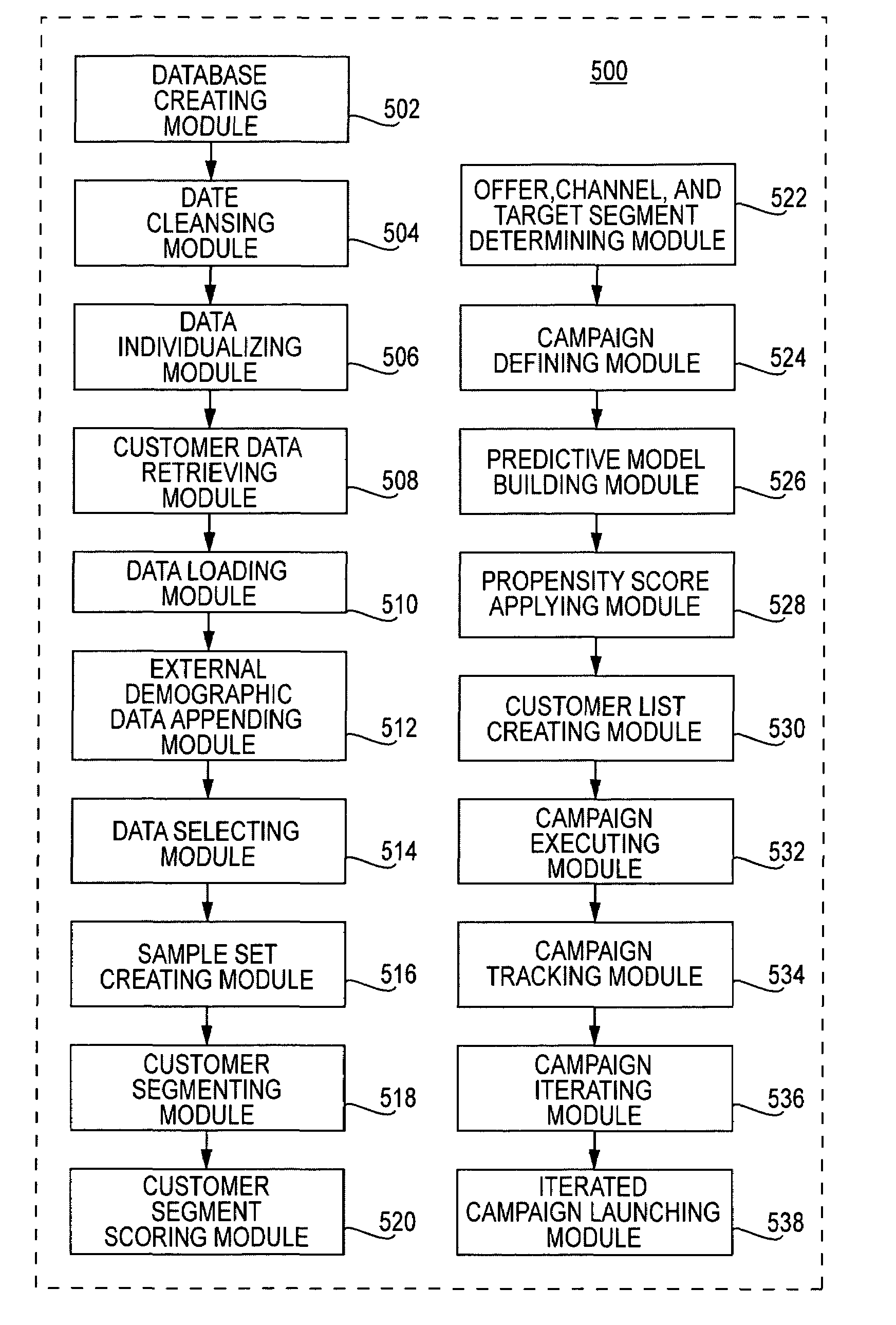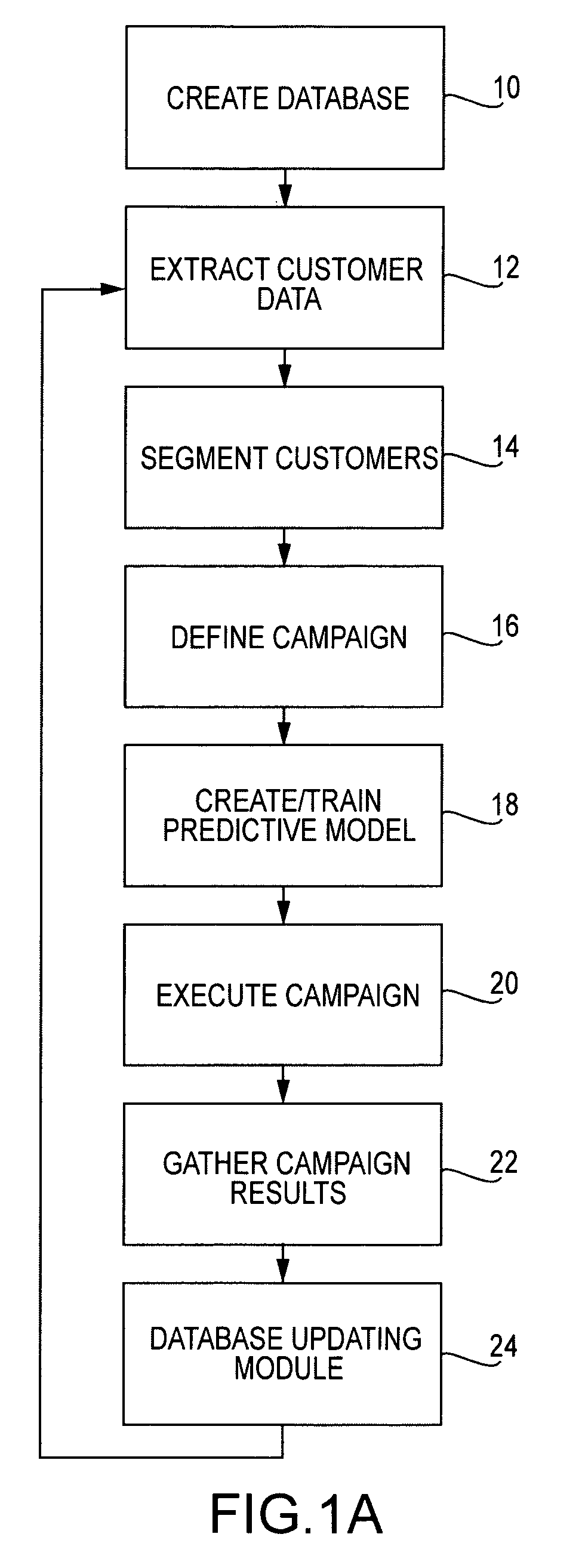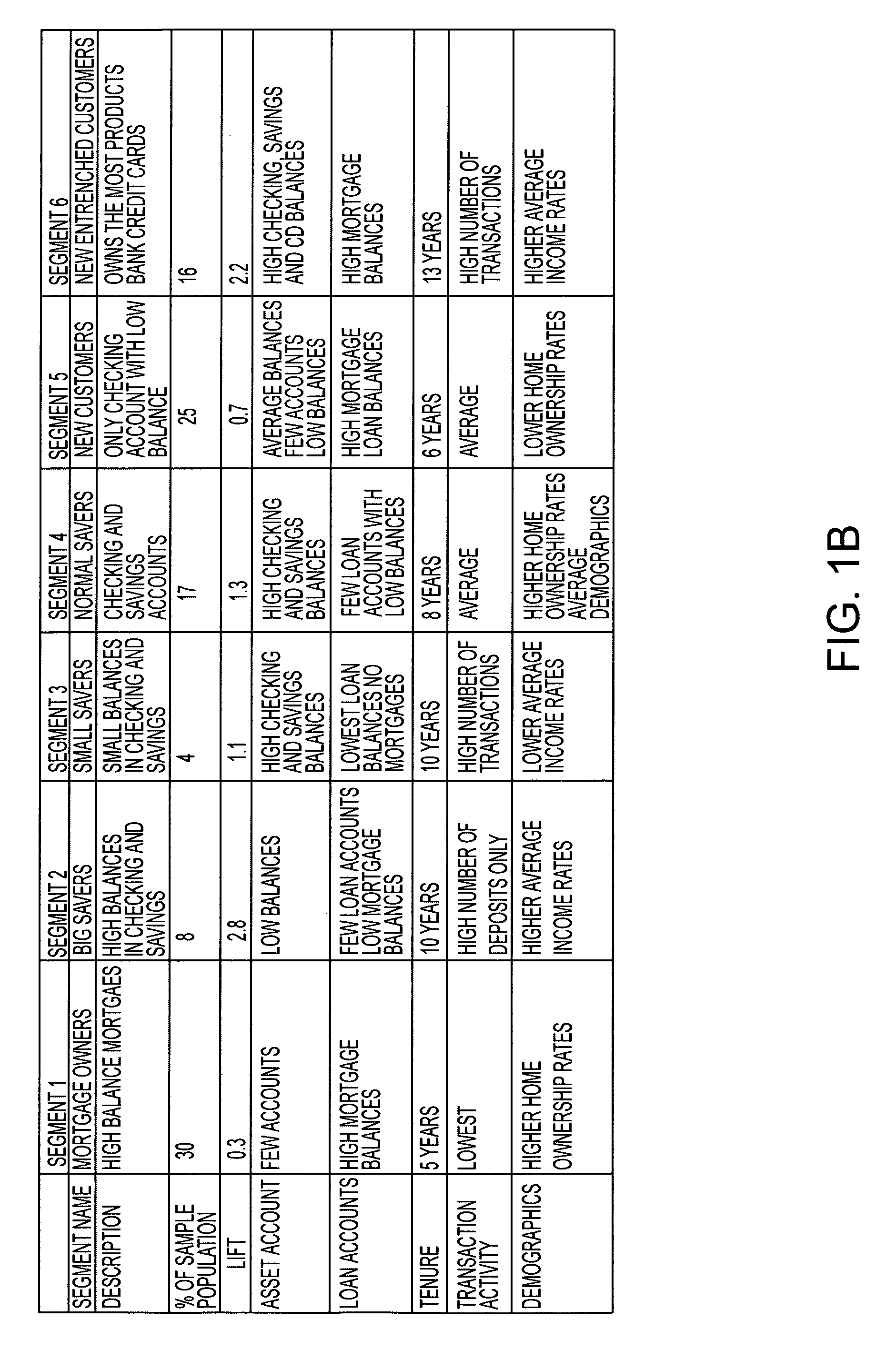Building analytical models with standardized virtual flat files
a technology of analytical models and virtual flat files, applied in the field of analytical model input, can solve the problems of difficult to formulate a total, integrated view of a customer, time-consuming process, and delivery of suboptimal results
- Summary
- Abstract
- Description
- Claims
- Application Information
AI Technical Summary
Benefits of technology
Problems solved by technology
Method used
Image
Examples
Embodiment Construction
[0024]The invention relates to adaptive marketing using insight driven customer interaction. The invention can be extended to other customer interactions in which insight improves the interaction between an enterprise and its customers. FIG. 1A illustrates a method for adaptive marketing using insight driven customer interaction according to one embodiment of the invention. Initially, a database may be created to store customer data, step 10. The customer data may be collected through internal, external, and / or business partner data sources. The database used for storing customer data may be any known data storage mechanism, generally a relational database often referred to as a data warehouse. According to one embodiment of the invention, the data warehouse platform used for storing the customer data is powered by NCR's Teradata system.
[0025]The data may be extracted from the database, step 12. In one embodiment, a CAR / PAR application may be used to extract data from the database a...
PUM
 Login to View More
Login to View More Abstract
Description
Claims
Application Information
 Login to View More
Login to View More - R&D
- Intellectual Property
- Life Sciences
- Materials
- Tech Scout
- Unparalleled Data Quality
- Higher Quality Content
- 60% Fewer Hallucinations
Browse by: Latest US Patents, China's latest patents, Technical Efficacy Thesaurus, Application Domain, Technology Topic, Popular Technical Reports.
© 2025 PatSnap. All rights reserved.Legal|Privacy policy|Modern Slavery Act Transparency Statement|Sitemap|About US| Contact US: help@patsnap.com



